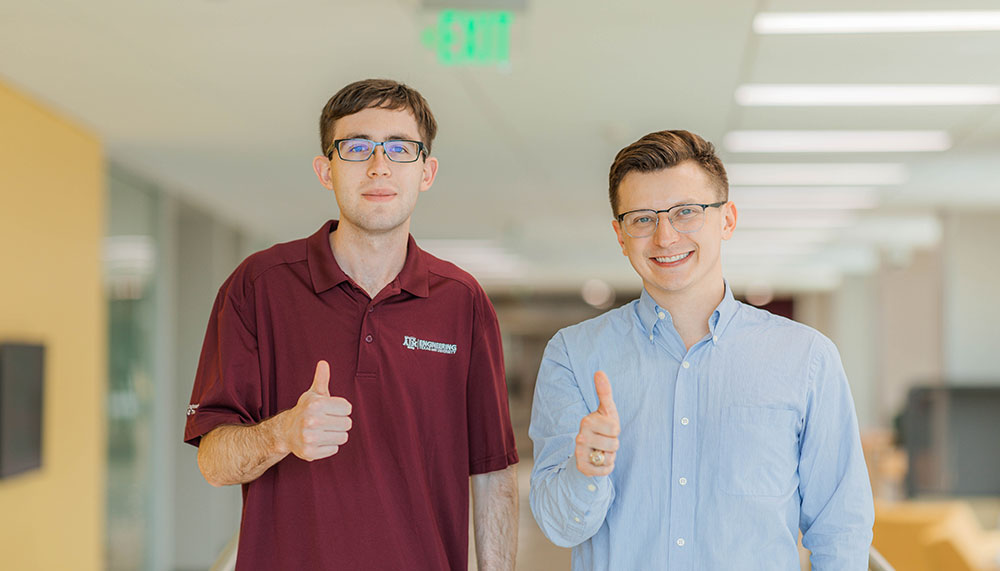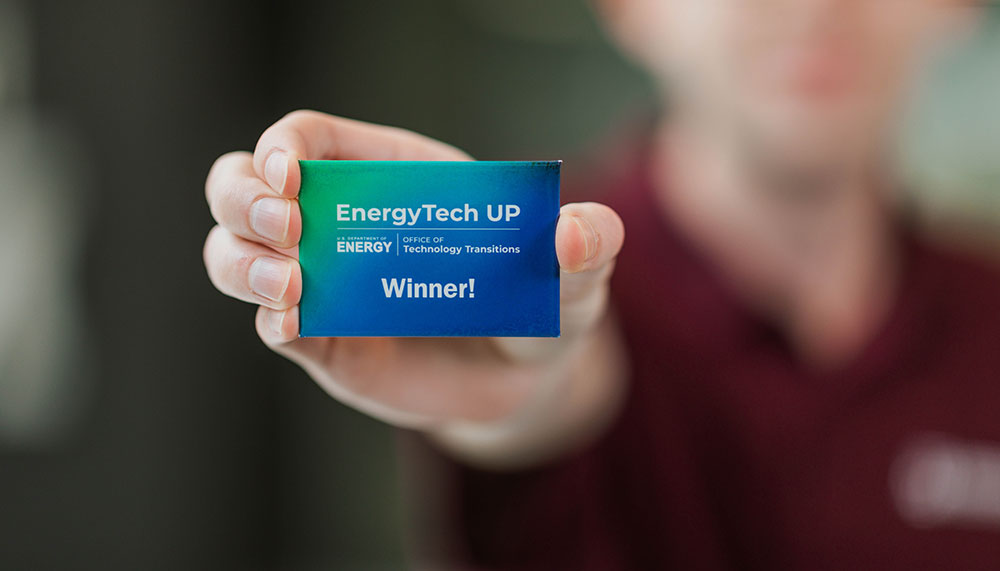
A team consisting of doctoral student Bryton Praslicka and senior Thomas Simms from the Department of Electrical and Computer Engineering at Texas A&M University was selected as Water Power Technologies Office Bonus Prize Winner at the Department of Energy’s (DOE) EnergyTech UP competition in March.
The team was awarded $25,000 for its innovative business plan to apply magnetic gears to wave energy converters through Praslicka’s startup company, FluxWorks LLC, which develops and manufactures magnetic gears for various applications.
We propose magnetic gear technology, an ultra-reliable, self-healing technology, as the key to better unlocking wave energy.
Wave energy converters utilize moving ocean waves to create usable power, as wind turbines convert wind into energy. Mechanical gearboxes can make wind turbines unreliable. The same applies to wave energy converters, which are even more challenging to operate and difficult to reach during necessary maintenance. To address this, the team’s proposal focused on using magnetic gears instead of mechanical to increase reliability, reduce maintenance requirements and avoid many common pitfalls with traditional mechanical technology.
“We propose magnetic gear technology, an ultra-reliable, self-healing technology, as the key to better unlocking wave energy,” Praslicka said.
Both Praslicka and Simms work with faculty members in the Advanced Electrical Machines and Power Electronics Lab, Praslicka conducting research under Raytheon Professor Dr. Hamid Toliyat and Simms pursuing undergraduate research under adjunct assistant professor Dr. Matthew Johnson.

In 2016, Toliyat worked with collaborators to build a magnetic gear for wave energy applications, and this project is one of his most cited papers and what put Texas A&M on the map for magnetic gear technology. That initial project gained momentum and led Praslicka to ultimately establish FluxWorks and turn this technology into a business plan, of which Simms is also now a part.
The magnetic gear technology that FluxWorks is venturing to manufacture perfectly demonstrated what the DOE Water Power Technologies Office was hoping for from participants — an innovative business model that tackles emerging challenges in the water power industry and aims to improve the performance, affordability, reliability and value of hydropower or marine energy in the United States.